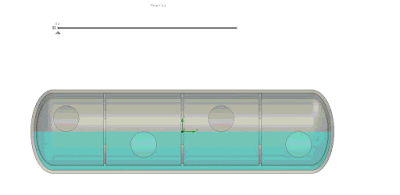Liquid rockets require turbopumps to feed propellent into the combustion chamber at a very high rate. This requires the propellent tanks to stay at a high pressure. This high pressure is created using Helium. Helium is expensive and has a reducing effect as the tank depletes. I want to take my previous ideas one step further. I propose the use of pistons to pressurize the propellent tanks.
I had previously proposed the encapsulated propellent tank design due to the following advantages. Rocket fuel and oxidizer are usually stored at cryogenic temperatures within the rocket. This creates a huge thermal stress on the tank walls. The boiling temperature of methane is -162 °C, oxygen is -183 °C. I propose embedding the coldest tank inside the less cold one. For example, liquid oxygen tank inside the liquid methane tank. The temperature difference between the boiling points of methane and oxygen is just 21 °C. Therefore, the thermal stress on the inner tank would be much less. Additionally, the outside liquid reduces the pressure of the inner liquid on the inner walls. As a result, the inner wall can be made thinner and lighter.
Addition of pistons with graphite rings leave no room for the liquid propellent to evaporate. The pistons do not need to be very heavy. The forward acceleration of the rocket increases the apparent weight of the pistons on the liquids. As the pistons go lower the empty tanks would create vacuum effect. This vacuum will be filled with the outside air let by the controlled vents. Rocket’s increasing altitude ensures higher air pressure inside the empty tanks compared to outside air. If the pistons apply too much pressure on the liquid propellent, then the vents would open and allow the air inside the empty tanks to escape outside, reducing the internal pressure. This would create a vacuum effect on the pistons and reduces the pressure on the liquids.
The liquid propellent inside the tank sloshes as the rocket accelerates. Tank slosh is the transient movement of liquids within a confined container or tank. The piston by continuously reducing the effective volume of the tank, eliminates the sloshing even at micro gravity. Finally, the piston allows the propellent to be totally consumed.


No comments :
Post a Comment